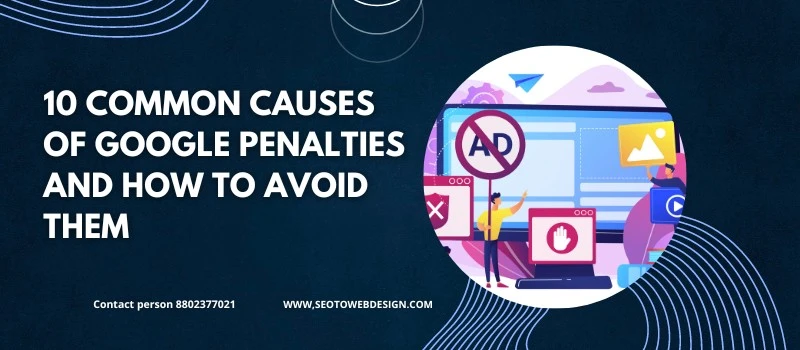1. Keyword Stuffing
What it is: Keyword stuffing is the overuse of keywords in your content in an attempt to manipulate search rankings.
Why it’s bad: It results in unnatural and spammy content that negatively impacts user experience, and Google penalizes sites that engage in this practice.
How to avoid it: Focus on natural, readable content. Use keywords strategically but not excessively, and ensure they fit the context of the content.
2. Thin Content
What it is: Pages with little helpful information or content that doesn’t significantly benefit consumers are referred to as having thin content. This includes duplicate content, doorway pages, or low-quality affiliate content.
Why it’s bad: Google wants to deliver quality content to its users, so pages with minimal substance will get penalized.
How to avoid it: Create comprehensive, valuable content that fully addresses the user’s query. Avoid duplicating content across your site, and invest time in producing original articles that offer real value.
3. Unnatural Backlinks
What it is: Backlinks are a major ranking factor, but Google penalizes websites that acquire unnatural links, such as those bought or obtained through link farms.
Why it’s bad: Unnatural link building manipulates search rankings and violates Google’s guidelines.
How to avoid it: Focus on earning high-quality, organic backlinks through genuine content promotion and guest blogging on reputable sites. Avoid any form of paid or spammy link schemes.
4. Hidden Text or Links
What it is: Hiding text or links on your website by making them invisible to users (but visible to search engines) is a form of deception.
Why it’s bad: This is considered a black-hat SEO tactic designed to manipulate rankings, which leads to Google penalizing the site.
How to avoid it: Ensure all content and links on your site are visible and intended for users. Be transparent in your SEO practices.
5. Cloaking
What it is: Cloaking involves showing different content to search engines than what users actually see. This trick is used to mislead Google about the page’s content.
Why it’s bad: It’s a clear violation of Google’s Webmaster Guidelines and will almost always result in a penalty.
How to avoid it: Ensure that the content shown to search engines is identical to what users see. Avoid deceptive SEO practices and focus on transparency.
6. Slow Page Speed
What it is: Slow-loading websites have a detrimental effect on user experience, and page speed is a ranking factor.
Why it’s bad: Google penalizes slow websites because they lead to higher bounce rates and provide a poor experience for users.
How to avoid it: Optimize your website by compressing images, using browser caching, minimizing code, and improving server response times. Make sure your website loads quickly by using resources such as Google PageSpeed Insights.
7. Mobile Usability Issues
What it is: Websites that are not optimized for mobile devices may face penalties, especially after Google’s mobile-first indexing shift.
Why it’s bad: More people are browsing on mobile, and Google prioritizes mobile-friendly websites. Poor mobile usability can lead to a drop in rankings.
How to avoid it:Use a responsive design that adapts to all screen sizes. Ensure your website is fast, easy to navigate, and fully functional on mobile devices.
8. Duplicate Content
What it is: Duplicate content refers to the same content being found on multiple pages, either on your website or across other sites.
Why it’s bad: Google struggles to determine which version of the content to rank and often penalizes sites with extensive duplication.
How to avoid it: Avoid duplicating content at all costs. If you must use similar content, implement canonical tags to tell Google which version to prioritize.
9. Over-Optimization
What it is: Over-optimization refers to overdoing your SEO efforts by excessively optimizing anchor texts, keyword density, and other elements.
Why it’s bad: This can make your site look unnatural, causing Google to suspect manipulative tactics, resulting in a penalty.
How to avoid it: Stick to natural, user-focused optimization. Don’t overdo it with keywords or anchor texts—balance is key to sustainable SEO.
10. User-Generated Spam
What it is: If your website allows comments, forums, or user-generated content, spammy submissions can harm your rankings.
Why it’s bad: Google penalizes sites that allow spam to go unchecked, even if the spam is posted by users and not the site owner.
How to avoid it: Regularly monitor and moderate user-generated content. Use spam filters and CAPTCHA verification to prevent spammy submissions from affecting your website’s health.

